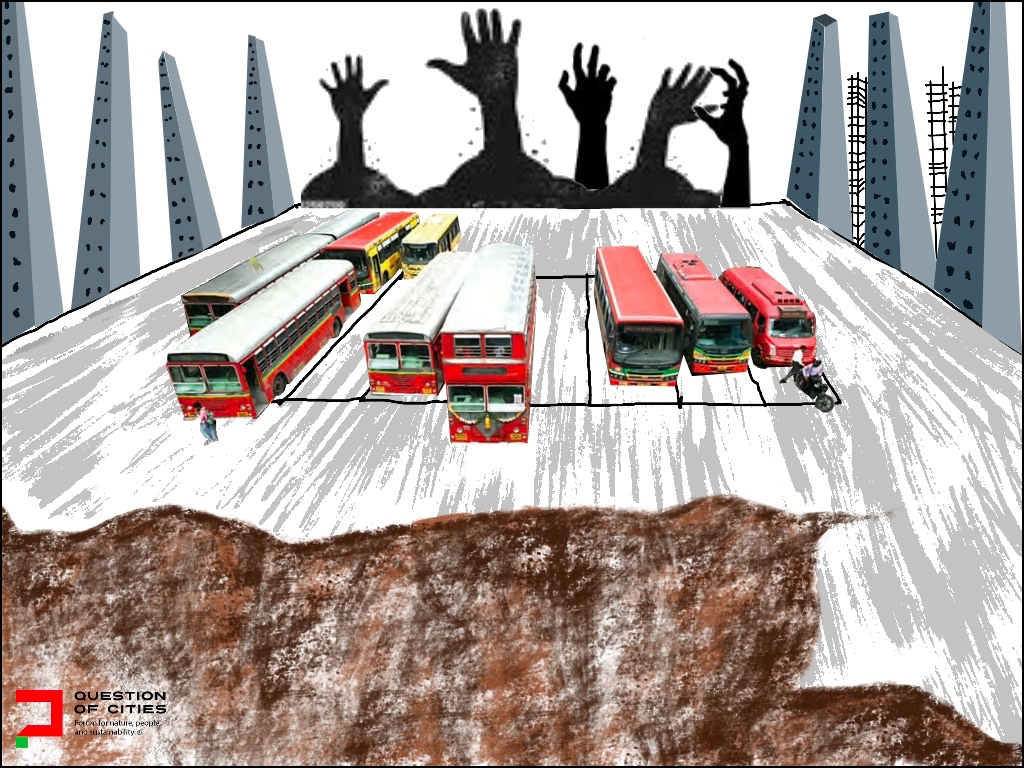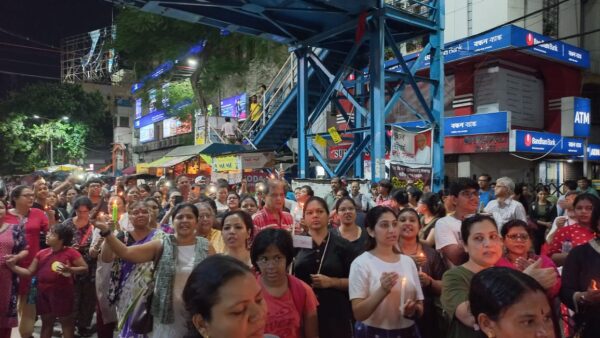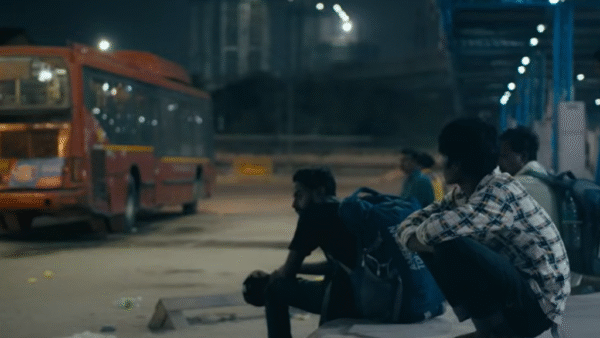The reliable and affordable network of buses used to be the pride of Mumbai and the envy of other cities in India. This is history.
The Brihanmumbai Electric Supply and Transport (BEST), a pale shadow of what it was even a decade ago, stands at the edge of ruin. Why the once-thriving service has been methodically put to death is a predictable story of the lure of land in a city with one of the world’s most expensive real estate.
The BEST did not diminish itself; it was deliberately done in. In 2011-12, it was a proud public utility with a fleet of 4,700 buses ferrying 4.2 million a day. By 2023, its fleet was barely 2,964 with 3.5 million commuters; importantly, less than a third of the fleet was owned and operated by the BEST as the wet lease model took hold. In May 2025, only a fifth of the 2,600 buses were owned by the organisation.[1]
Wet lease, in which private contractors own and operate bus routes for a revenue from the BEST, is a disguise for the sinister agenda of fully privatising the service and monetising the land. It came on the heels of the Brihanmumbai Municipal Corporation (BMC), the parent body of the BEST, terming the bus service “loss-making” and “inefficient” to deny it financial support. The BMC is, of course, India’s richest municipal body with annual budgets of Rs 50,000 crore to Rs 74,400 crore. But former municipal commissioner, Ajoy Mehta, famously declared in 2017 “I will not subsidise inefficiency”.[2]
The cumulative losses of BEST stand at around Rs 9,300 crore.[3] To make good, the organisation intends to sell or pawn its family silver – land parcels totalling more than 126 hectares, some at prime locations, across Mumbai. Back in 2017, incidentally when the privatisation began, international consultants PwC had valued the land at Rs 5,170 to Rs 6,160 crore, citizens’ groups point out. A few of its 27 bus depots have been monetised. Commercial developers have constructed plush towers; Mumbai got nothing from the public land. In a city rapidly privatising land, this fits the larger agenda.
Mumbai’s policy makers and intelligentsia have hardly joined the issue. Its workers’ union and voluntary organisations such as ‘Amchi Mumbai Amchi BEST’ have been at it – with some success. However, without elected corporators in the BMC for three years now, people have virtually no place of appeal except approaching bureaucrats. But it’s not enough – because this is a political question.
It requires political engagement and authority to decide that the BEST is worth saving – and reviving. Expectedly, the political will seems to bend towards diminishing it on the grounds that it is a loss-making one. This is inexplicable. The bus service is a public utility like the BMC’s hospitals and schools. To judge them by the corporate parameter of profit-loss is unconscionable and against the sworn responsibility of the state.
The story of BEST is important not only to Mumbai but to other fast-expanding cities too for several reasons. It is about safe, affordable, and reliable public transport for the maximum number of people, it offers faster mobility on streets gridlocked with an increasing number of private vehicles, it remains the most environmentally sustainable mode of transport in large cities.
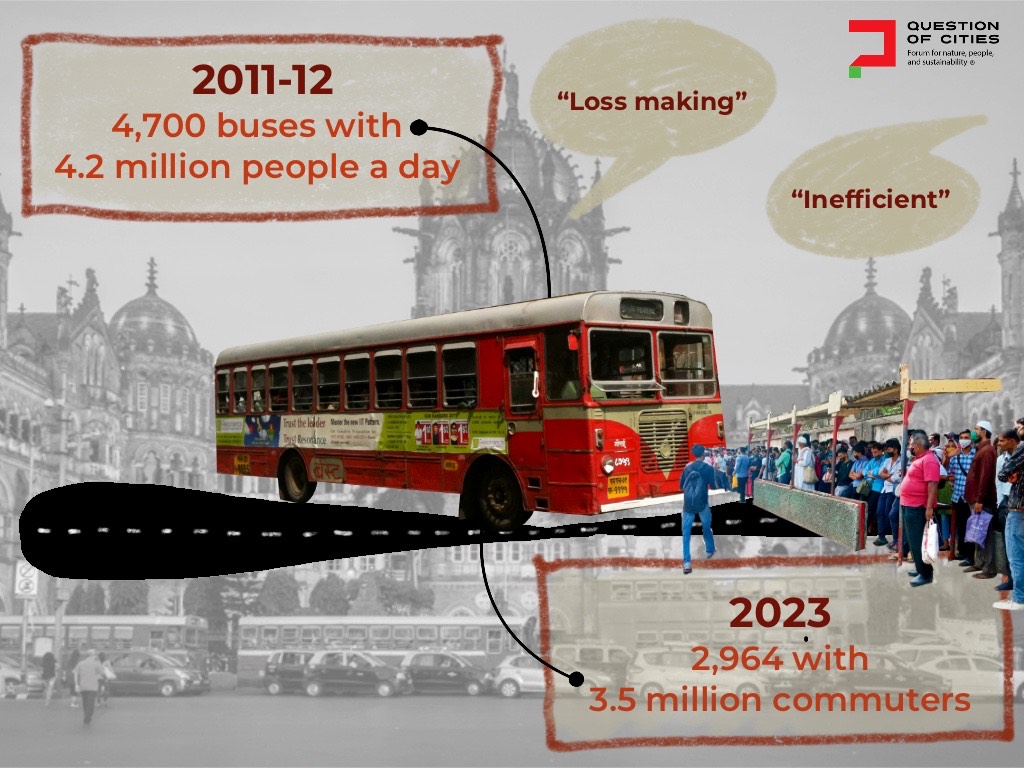
Rest these four myths
The myths about BEST that have been circulated over the years, and have unfortunately gained legitimacy, need to be laid to rest.
1. The myth of inefficient loss-making entity
In projecting the BEST as inefficient and loss-making, the BMC and state government have gone against the very grain of what urban public transport is across the world. They have embraced the idea that public transport – an essential service – should be profit-making. This cannot be. A public service will need state subsidies. In London, Paris and New York, cities that have bus services older than in Mumbai, the local or provincial authorities subsidise bus transport. The philosophy is simple: An essential public good must be available, accessible and affordable. Mumbai cannot be an exception to this.
The cumulative losses of nearly Rs 9,300 crore can be traced back to the bifurcation of the BEST’s revenues from its electricity division after the ‘reforms’ to the Electricity Act in 2003. Instead of planning for a robust subsidised bus service, it was allowed to slide. This, as the ‘Amchi Mumbai Amchi BEST’ campaign points out, was used to bring in privatisation through the wet leasing model in 2017.
Data shows that, since then, the losses have risen – Rs 1,012 crore in 2018-19 to Rs 2,123 crore in 2020-21 and Rs 2,514 crore in 2024-25. Meanwhile, routes were curtailed, service quality dipped, accidents increased and wait times became longer. The BEST has to pay a fixed revenue to private operators anyway. This is a loss-loss situation. Why not make it a full public utility again? What explains the state’s unwillingness to consider subsidies except a political commitment to privatisation?
2.The myth of no funds in BMC
The BMC has been whining about the lack of funds for the BEST. Unpack its allocations. It is clear that they are decisions of political prioritisation.
It allocated Rs 1,250 crore of the Rs 74,400 crore budget for 2025-26 to the BEST but set aside Rs 5,516 crore for the Mumbai Coastal Road – Rs 4,000 crore for the second phase connecting Versova with Dahisar and Rs 1,516 crore to complete the work and maintain the southern section made operational in March 2024. Since then, less than 25,000 cars use it every day.[4] Compare that to the 3.3 million commuters on BEST buses. In all, the coastal road project costs the BMC a whopping Rs 13,310 crore.
Let’s take stock of other allocations for this financial year – Rs 5,545 crore to the Mumbai[5] Sewage Disposal Project; Rs 3,111 crore for road concretisation; Rs 1,958 crore for the Goregaon Mulund Link Road.[6] The Mumbai Metro Aqua Line (Line 3), now 98 percent complete, carries a price tag of Rs 37,276 crore partly from the state government and, when fully operational, is projected to carry 1.3 million commuters a day.[7]
The pattern is unmistakable. The BMC has funds for projects it wants to invest in but denies the BEST, a public utility, even a fraction of that as subsidy. What is it if not a political decision?
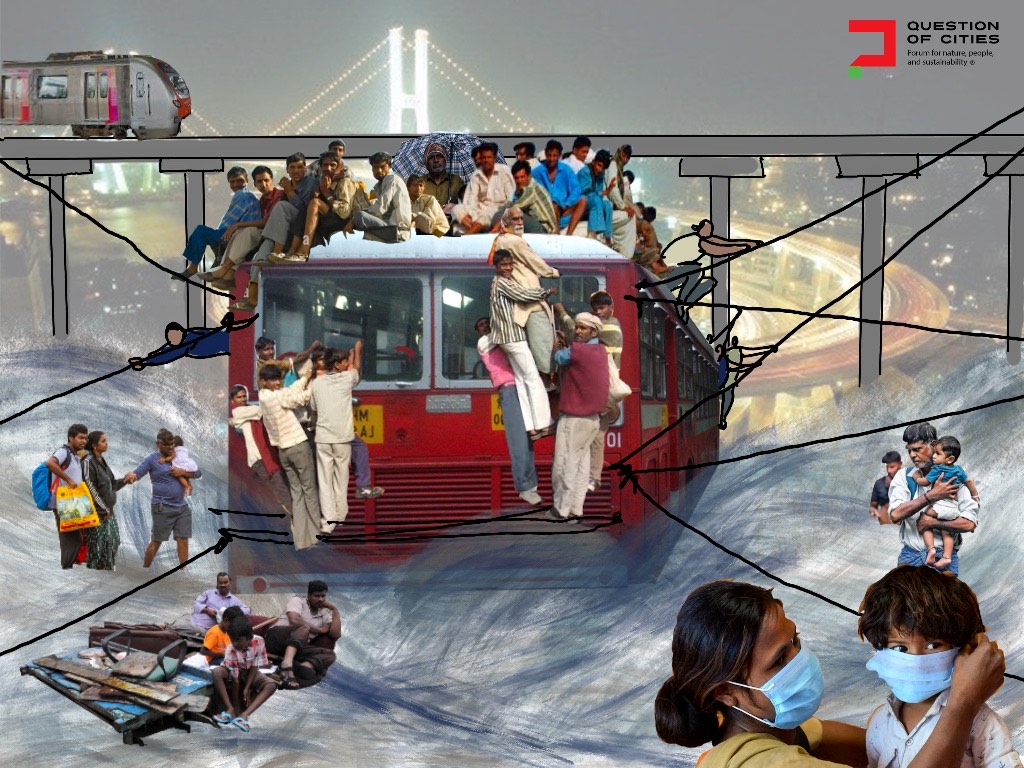
3.The myth of the metro as mass transit mode
The metro may be useful but it cannot replace the BEST. The buses carry millions a day but, more than that, they offer comfort and assurance. During the Covid-19 lockdown, when the suburban trains completely stopped, skeletal services of the BEST kept Mumbai connected. Nearly 100 drivers and conductors lost their lives then.[8] During the unprecedented floods in July 2005, the higher ground-clearing buses took people in from drowning cars and two-wheelers and coordinated with depots for drinking water and biscuits. For decades, its night routes enabled people to work beyond the 9-to-5 timings, its low-occupancy routes ensured connectivity to desolate destinations, and women travelling late nights felt relatively safe.
In the recent infrastructure push to roads and metro, and augmentation of suburban trains, the BEST bus network seems to be de-prioritised. The vision assumes that the metro will someday replace the bus. Can it ever? Evidence shows that despite Mumbai’s first metro from Versova to Ghatkopar running full, BEST bus routes along the arterial road continue to see overcrowding through the day.
A metro ride, while more affordable than private cars, costs many times that of a bus commute; sometimes, four-five times more. Not all the 3.3 million bus users can afford them. Besides, the metro is not a point-to-point service; commuters still need a bus or intermediate transport like autorickshaws to reach their destinations.
4.The myth of reduced commuters and swollen workforce
When the BEST raised fares this May, doubling the minimum from Rs 5 to 10 on regular and Rs 6 to 12 on air-conditioned buses, an estimated 10 to 25 percent commuters dropped off. Raising fares to garner more revenue is a placebo – it will hardly bring the revenues needed but shows that the organisation is trying to offset its losses.
At its peak, the buses carried 4.2 million a day.[9] They still have 3.3 million a day – roughly the entire city of Madrid or the daily load on Mumbai’s Western Railway trains. Reduced fleet and smaller buses may have contributed to the decline. The BEST commuters are angry at the declining quality of services, wet lease buses catching fire, increased wait times and accidents, non-modernised bus stops. Why are they not worth as much as the metro commuters or coastal road car passengers?
The BEST also points to a large inefficient workforce. Data shows that it had 6.65 employees per bus in 2019 which almost doubled by 2023. But, as the union points out, this is mischievous because the organisation drastically reduced its fleet.
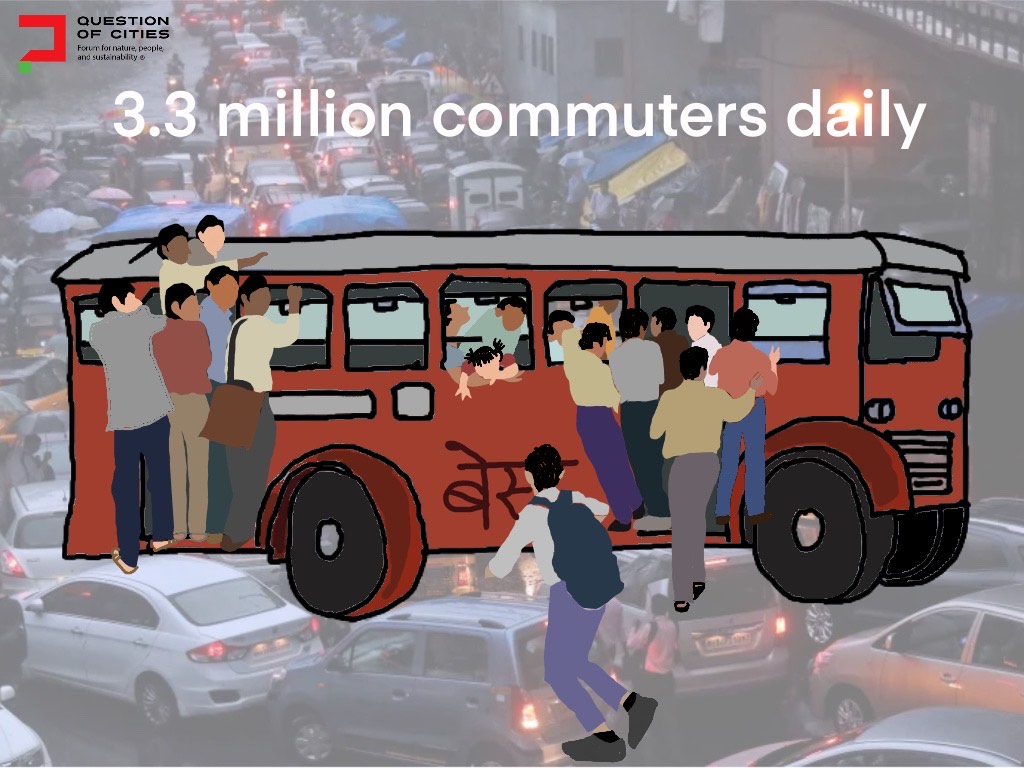
How can BEST be revived?
If the intent is to get the BEST back on track, the way forward is clear – a comprehensive plan with the organisation leveraging its strengths of an experienced workforce and using financial support from the BMC and state government to provide Mumbai with a strong core mode of affordable transport alongside the suburban trains and the metro. The demand exists, so does the goodwill.
A succession of BMC commissioners and BEST general managers have done a rather commendable job of demolishing an old and trusted public service; a small exception was Commissioner Iqbal Singh Chahal who, in February 2024, pledged an amount to the BEST but it has not been realised.[10] If the incumbent Bhushan Gagrani is guided by public interest, he must ensure that the BEST gets some subsidies. Then, speak to transport analysts, union leaders, and citizens’ groups like ‘Amchi Mumbai Amchi BEST’ who have ideas to revive the BEST.
Reviving the BEST must begin by taking complete charge back from private contractors. “The contractualisation model is based on overworking and underpaying workers and cutting costs on maintenance – the very aspects that ensure safety and reliability of services. The only way to improve the service quality is to restore BEST to a fully public fleet,” stated the recent report by ‘Amchi Mumbai Amchi BEST’.[11] If privatisation has not worked out for BEST, it should logically be terminated. This, all said, is a political or ideological decision beyond the ken of bureaucrats.
The monetisation of land – mainly bus depots but also staff quarters and offices – as it stands would benefit Mumbai’s private real estate developers rather than the BEST or the city. This must be halted. This is public land and must not be simply hived off to the highest bidders. Besides, reviving BEST would mean these depots are needed. The land monetisation, as the ‘Amchi Mumbai Amchi BEST’ points out, “will be the last nail in the coffin” for the BEST.
Third, there has to be a recognition that the bus system is an essential public good which means it can claim state subsidy and must not be evaluated as a mere business with profit-loss. This acknowledges that affordable public transport is also a part of people’s Right to the City. Governments are obliged to recognise and uphold this right.
This July marks the beginning of the centenary year of the BEST bus services; the first motorised bus ran on July 15, 1926. Nothing would commemorate the occasion better than a comprehensive recovery plan for Mumbai’s beloved BEST.
Illustrations: Nikeita Saraf

